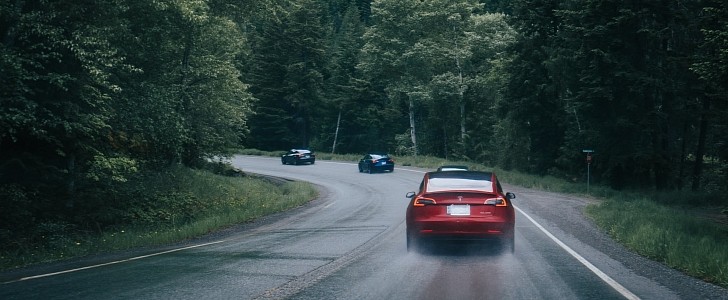Charging electric vehicles (EVs) will remain a challenge. While developed economies benefit from relevant and useful investments in this area, other countries are struggling with the transition. Cisco’s solution might prove extremely useful for the elimination of range anxiety.
The goal of global zero-emissions transport might get another ally soon. A recently disclosed United States Patent and Trademark Office (USPTO) filing shows cars will be able to charge one another while on the move. If proven viable, this Cisco invention can change how we currently view traveling long distances with electric cars. It can eliminate waiting for long periods of time to replenish your EV’s battery.
To put it into the simplest of terms, this invention works as a communication module between EVs and provides the necessary means for ‘donor’ cars to charge ‘receiver’ vehicles. If one driver identifies the need to charge the battery as soon as possible, they can activate the system. It will then emit a signal that will be understood by other EVs. If the other driver accepts, then the cars connect, charging starts, and the driving continues without interruption.
Allowing ourselves a bit of exaggeration, this technology can be compared to either how a train looks like while in motion or to how planes are using air-to-air refueling. The EVs are coming very close to each other, the docking begins and charging starts immediately. All this is happening while both cars remain on the road.
The transfer of charge from one vehicle to another while in-motion can be achieved in a number of ways. But first, for one vehicle to recharge another, they must form a sort of connection over which power will be transferred. This can be a bumper connector receptacle, an auto extending bumper armature and cabling, or an automated system to align the vehicles and supervise the transfer of data and charge between the vehicles.
In-motion vehicle-to-vehicle charging envisioned by Cisco sounds like science-fiction for now, but we don’t doubt its usefulness. It might help EV owners avoid problems that come with depleting the batteries and may open the door for future business opportunities. Moreover, it can settle the debate about fast charging and battery-swapping.
If you're looking for all the technical details, then the USPTO filing can be found attached down below.
To put it into the simplest of terms, this invention works as a communication module between EVs and provides the necessary means for ‘donor’ cars to charge ‘receiver’ vehicles. If one driver identifies the need to charge the battery as soon as possible, they can activate the system. It will then emit a signal that will be understood by other EVs. If the other driver accepts, then the cars connect, charging starts, and the driving continues without interruption.
Allowing ourselves a bit of exaggeration, this technology can be compared to either how a train looks like while in motion or to how planes are using air-to-air refueling. The EVs are coming very close to each other, the docking begins and charging starts immediately. All this is happening while both cars remain on the road.
Money will be involved, of course
Nothing comes for free! For purposes of illustration, let's assume that a vehicle is going to travel along the same route as another vehicle for a certain amount of time. One of these cars can provide charging to the other that needs some energy before arriving at a station. In such a case, an indication of the charging request may be presented to the driver of the 'donor' vehicle to confirm the in-motion charging prior to accepting help. There may be financial incentives for the owner of the 'donor' vehicle for providing a charge to the 'receiver' vehicle. Moreover, Cisco even sustains the idea that owners of EVs with this technology can participate in an auction to determine which vehicle can provide charge at the lowest cost. Sounds fun!The transfer of charge from one vehicle to another while in-motion can be achieved in a number of ways. But first, for one vehicle to recharge another, they must form a sort of connection over which power will be transferred. This can be a bumper connector receptacle, an auto extending bumper armature and cabling, or an automated system to align the vehicles and supervise the transfer of data and charge between the vehicles.
In-motion vehicle-to-vehicle charging envisioned by Cisco sounds like science-fiction for now, but we don’t doubt its usefulness. It might help EV owners avoid problems that come with depleting the batteries and may open the door for future business opportunities. Moreover, it can settle the debate about fast charging and battery-swapping.
If you're looking for all the technical details, then the USPTO filing can be found attached down below.







